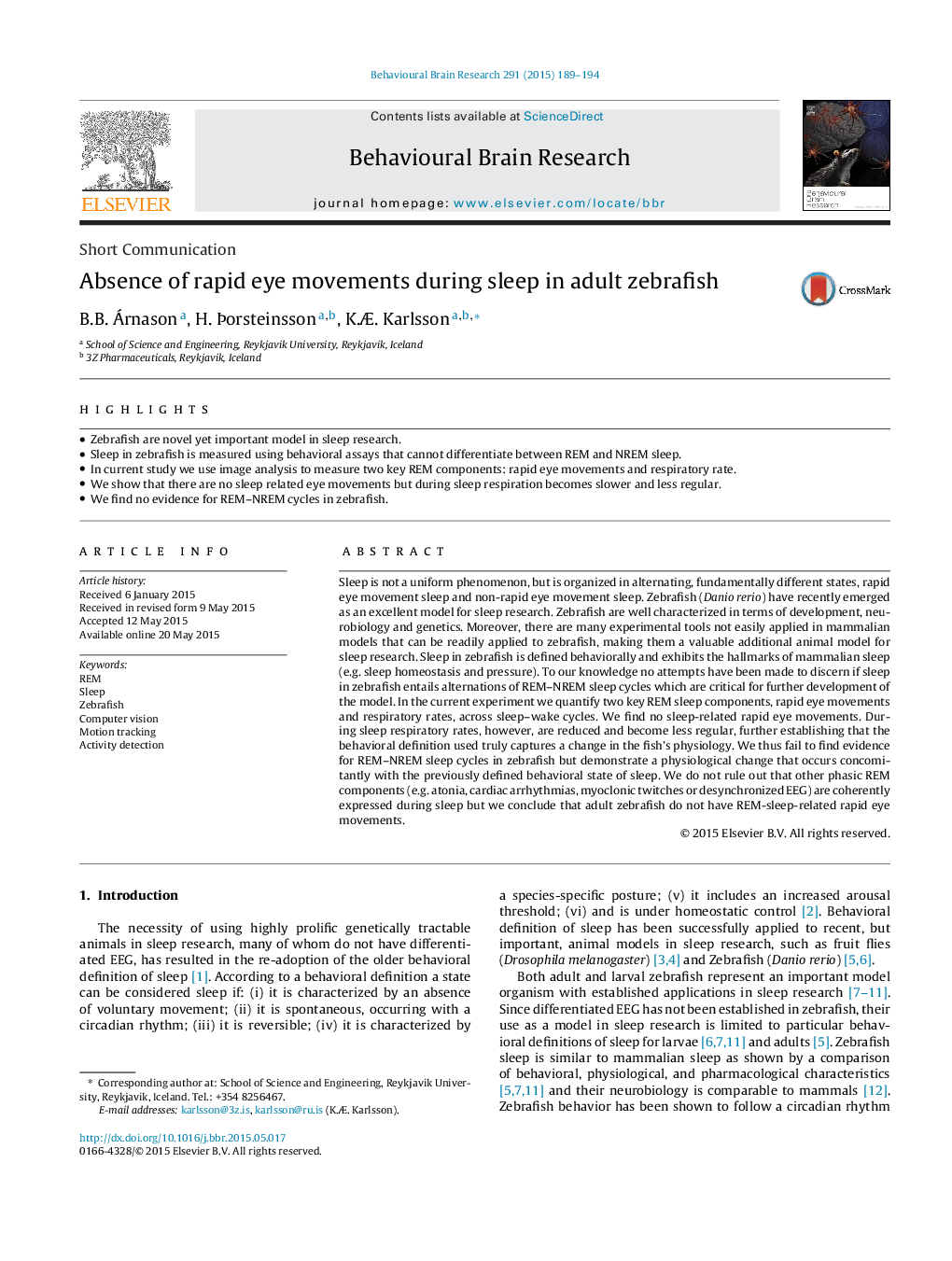| Article ID | Journal | Published Year | Pages | File Type |
|---|---|---|---|---|
| 4312416 | Behavioural Brain Research | 2015 | 6 Pages |
•Zebrafish are novel yet important model in sleep research.•Sleep in zebrafish is measured using behavioral assays that cannot differentiate between REM and NREM sleep.•In current study we use image analysis to measure two key REM components: rapid eye movements and respiratory rate.•We show that there are no sleep related eye movements but during sleep respiration becomes slower and less regular.•We find no evidence for REM–NREM cycles in zebrafish.
Sleep is not a uniform phenomenon, but is organized in alternating, fundamentally different states, rapid eye movement sleep and non-rapid eye movement sleep. Zebrafish (Danio rerio) have recently emerged as an excellent model for sleep research. Zebrafish are well characterized in terms of development, neurobiology and genetics. Moreover, there are many experimental tools not easily applied in mammalian models that can be readily applied to zebrafish, making them a valuable additional animal model for sleep research. Sleep in zebrafish is defined behaviorally and exhibits the hallmarks of mammalian sleep (e.g. sleep homeostasis and pressure). To our knowledge no attempts have been made to discern if sleep in zebrafish entails alternations of REM–NREM sleep cycles which are critical for further development of the model. In the current experiment we quantify two key REM sleep components, rapid eye movements and respiratory rates, across sleep–wake cycles. We find no sleep-related rapid eye movements. During sleep respiratory rates, however, are reduced and become less regular, further establishing that the behavioral definition used truly captures a change in the fish's physiology. We thus fail to find evidence for REM–NREM sleep cycles in zebrafish but demonstrate a physiological change that occurs concomitantly with the previously defined behavioral state of sleep. We do not rule out that other phasic REM components (e.g. atonia, cardiac arrhythmias, myoclonic twitches or desynchronized EEG) are coherently expressed during sleep but we conclude that adult zebrafish do not have REM-sleep-related rapid eye movements.
